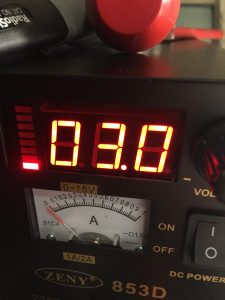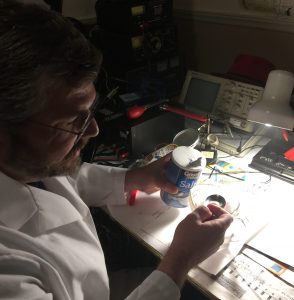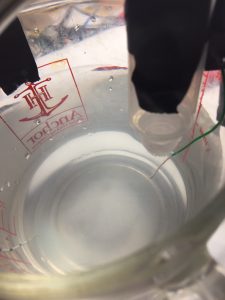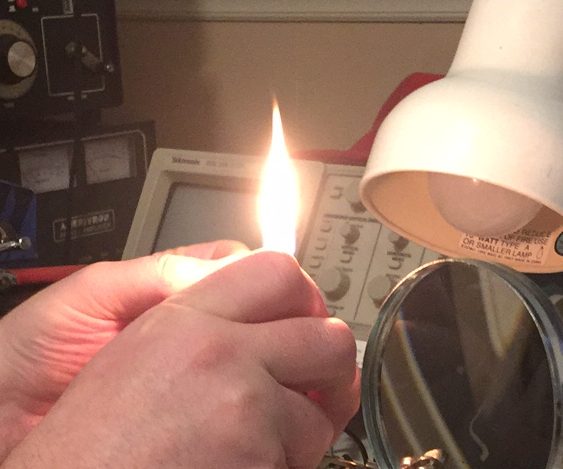Introduction to Water Separation
Water is everywhere, and it’s easy to come by. Undeniably, fuel is a little harder to extract. Hydrogen and Oxygen are the molecules that make up water. Furthermore, we have two atoms of hydrogen for every one atom of oxygen. Subsequently, we can extract the hydrogen and oxygen from the water separately through a process known as Electrolysis.
Because pure water does not conduct current, we must add an impurity to the water. In this instance, we will add salt. The salt will cause our solution to become conductive. This means that electricity can flow between our positive and negative terminals.
I must warn you now… We are working with flammable gasses, and a flame source. Do not try this on your own!
Setting things up
We will need a DC power source. In this case, I have a power supply set for 3v.

We also need a container of water, two leads, some salt, and wiring which we will connect to the power supply. If you wish to capture the gasses, we will also need a test tube, or another container for this.

Next we will secure the leads into the container.

Starting the process
Finally, let’s energize the power supply, and see some action!

You will notice the bubbles being released from the leads. Remember, a water molecule is made of up 2 atoms of Hydrogen, and one atom of Oxygen. When we start the process, and capture the gasses, you will notice the lead capturing the hydrogen is filling up faster than the container which is capturing the oxygen.
When we put the containers next to a flame, the container with the oxygen will cause the flame to glow brightly. The container with the Hydrogen could cause a “Pop” or a small explosion. Because of this, you need to be very careful when testing these gasses.
In this instance, I placed the container over the negative lead to capture the oxygen. This lead to a bright, larger flame when a match was placed onto the container.

Because the solution is now acidic, I added some baking soda to neutralize the acid before disposal.
— Ricky Bryce
